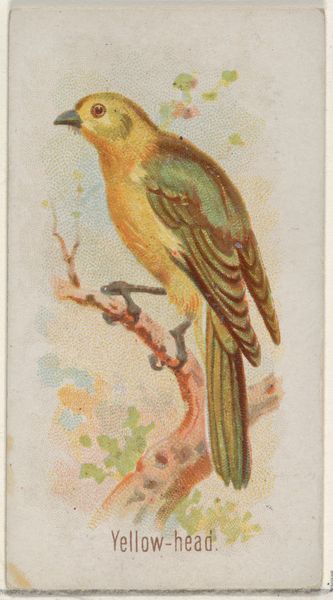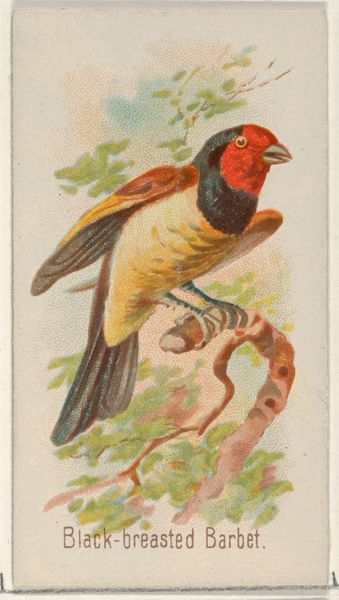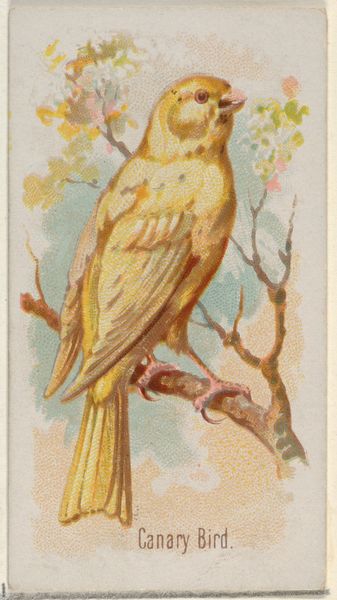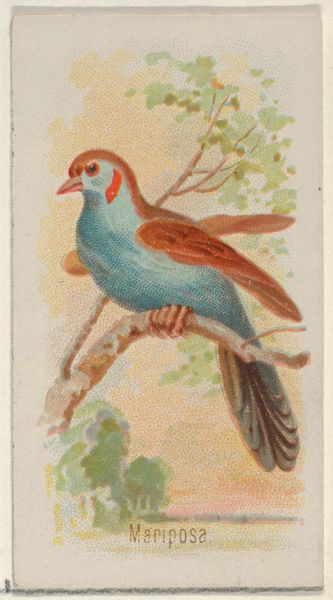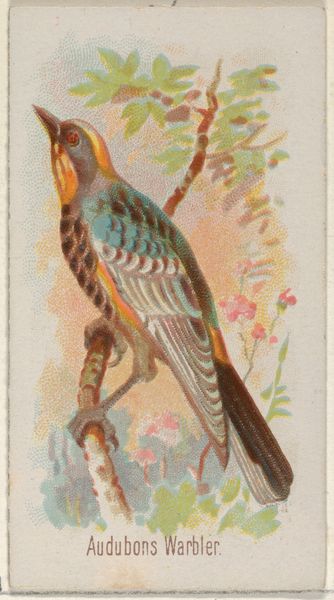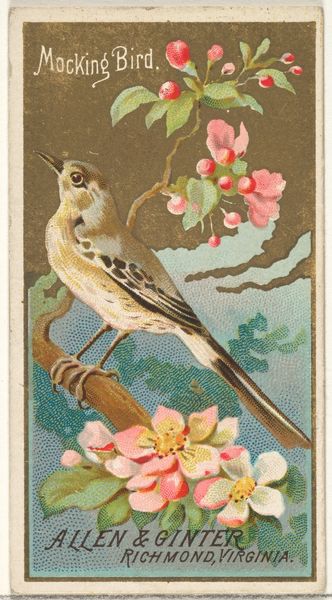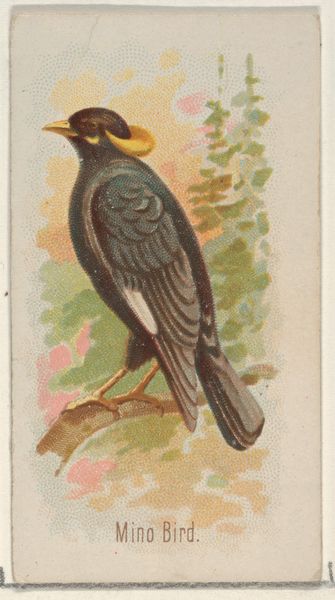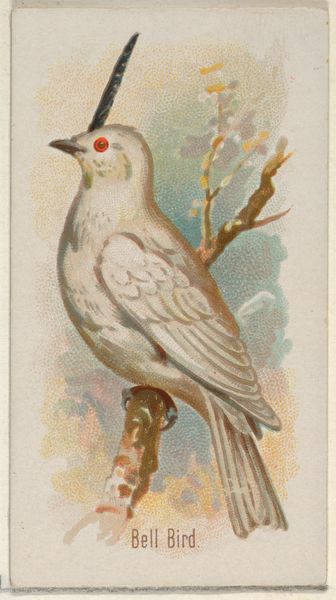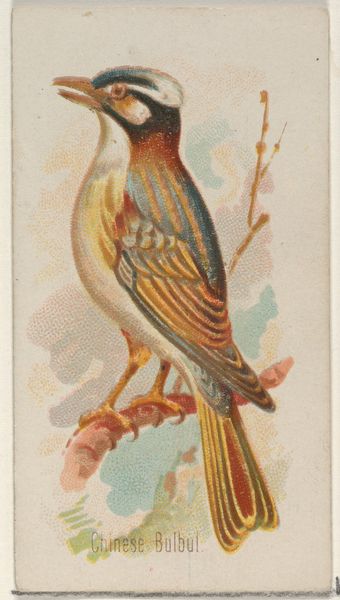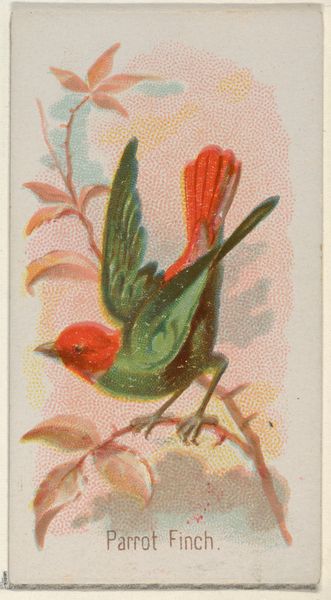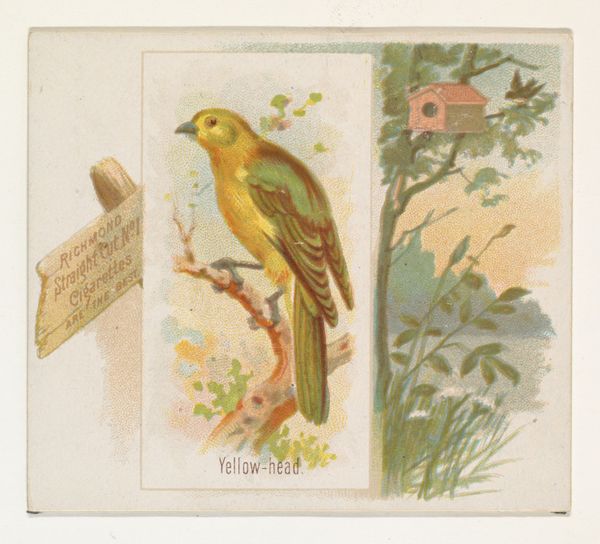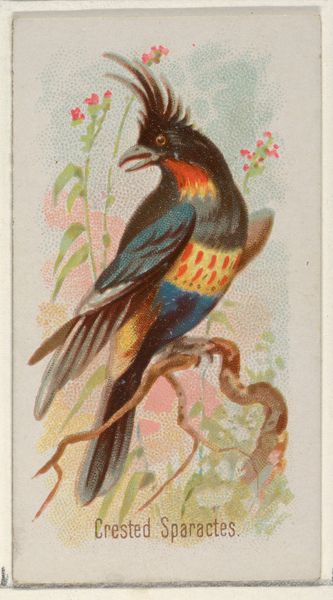
Golden Oride, from the Song Birds of the World series (N23) for Allen & Ginter Cigarettes 1890
0:00
0:00
lithograph, print
#
water colours
#
lithograph
# print
#
coloured pencil
Dimensions: Sheet: 2 3/4 x 1 1/2 in. (7 x 3.8 cm)
Copyright: Public Domain
Curator: Here we have a “Golden Oriole” print, made around 1890. It comes from the “Song Birds of the World” series (N23) originally created for Allen & Ginter Cigarettes. Editor: The first thing that strikes me is the careful rendering of the bird, yet somehow it evokes a feeling of a more innocent time. Curator: Well, these trade cards, often tucked into cigarette packs, were immensely popular back then. It's interesting to note how Japonisme influenced its composition. The placement of the bird, perched asymmetrically on a flowering branch, echoes Japanese woodblock prints. Editor: Indeed. Birds themselves carry symbolic weight, representing freedom, transcendence. Here, the Golden Oriole could symbolize good fortune. Gold, of course, traditionally speaks to prosperity and high status, as if the bird itself is wealth materialized. Curator: True. Notice the balance of the design. The golden hues of the oriole are strategically contrasted against the paler, almost ethereal blossoms and the light blue backdrop. The texture, achieved through watercolor and colored pencil, suggests a delicacy but lacks real depth, which seems intentional for such a small print. The absence of sharp, defined lines flattens the form to almost suggest Art Nouveau. Editor: This makes one think about its context— these cards brought images of beauty and exoticism into everyday life. For many, such cards might have been their only exposure to different species of birds from around the world. This connects to the broader cultural phenomena in which Westerners developed a passion for collecting nature, both real and represented. Curator: Exactly! And beyond ornithology, these little cards offer insights into popular culture. The brand using nature as advertisement is clever. Each element has purpose; the color, the composition, even the texture points towards this pursuit of an aesthetic ideal—a self-contained world, rendered in miniature. Editor: The way this simple image marries cultural context with artistic intention. A tiny window onto both the beauty of nature and the values of its time. Curator: Absolutely. A fleeting encounter with avian beauty, framed within a consumer product – an unexpectedly rich convergence of art and commerce.
Comments
No comments
Be the first to comment and join the conversation on the ultimate creative platform.
